-

知识的边界
大数据时代反思知识 因为事实不再是事实,专家随处可见 所有确定性都被连根拔起,话题再无边界,没有人对任何事情能达成一致。 在互联网的引领下,知识现在已经具有了社交性,流动且开放。温伯格向我们展示了这些特点如何可以为我们所用。 ——马克•贝尼奥夫(云计算之父,著有《云攻略》) 这本富有洞见的著作,奠定了温伯格作为数字时代最重要的思想家之一的地位。如果你想要理解信息洪流涌动对于我们的生活到底意味着什么,那么这本书就是你一直在寻找的指南。 ——丹尼尔•H.平克(全球最具影响力的50大思想家之一,著有《驱动力》和《全新思维》) 《知识的边界》是温伯格的力作,他将无数微小的争论——信息过载、回声室效应、大众的智慧——整合成了如何在知识网络化时代生活和工作的一种洞见。 ——克莱•舍基(互联网革命的伟大思考者,著有《人人时代》和《认知盈余》) 《知识的边界》(现今最了解互联网信息结构的学者戴维•温伯格最强力作,告诉你互联网让你更聪明了还是更笨了?) 曾经,我们知道怎么去获取知识。我们的答案来自于书籍或者专家。我们会确定事实,继续前进。而在网络时代,知识已经进入了网络中,出现了史上最多的知识,但这些知识是不同的。所有确定性都被连根拔起,话题再无边界,没有人对任何事情能达成一致。 然而,对于知识的捕猎者而言,这是最好的时期——如果你知道如何获取知识的话。作者在本书中向我们展示了网络化的知识(networked knowledge)如何增进对商界、科学界、教育界和政府的理解,并且,和人们不得不依赖传统专业知识来源的时代相比,它又怎样做到令人们可以做出更明智的决策。 这本开创性的著作,动摇了我们知识观的基础——从事实的作用到书籍的价值到专家的权威性——为知识在互联世界的未来提供了具有说服力的愿景。 -
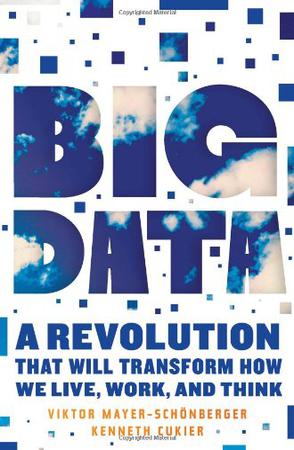
Big Data
National Bestseller “No other book offers such an accessible and balanced tour of the many benefits and downsides of our continuing infatuation with data.”—Wall Street Journal “What I’m certain about is that Big Data will be the defining text in the discussion for some time to come.”—Forbes.com It seems like “big data” is in the news every day, with new examples of how powerful algorithms are teasing out the hidden connections between seemingly unrelated things. Whether it is used by the NSA to fight terrorism or by online retailers to predict customers’ buying patterns, big data is a revolution occurring around us, in the process of forever changing economics, science, culture, and the very way we think. But it also poses new threats, from the end of privacy as we know it to the prospect of being penalized for things we haven’t even done yet, based on big data’s ability to predict our future behavior. Big Data is the first big book about this earthshaking subject, with two leading experts explaining what big data is, how it will change our lives, and what we can do to protect ourselves from its hazards. -
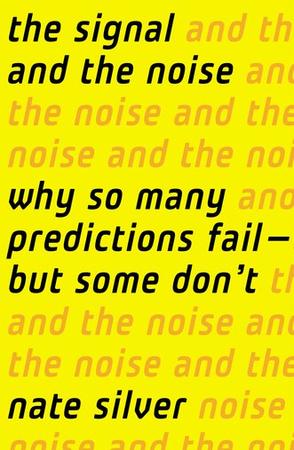
The Signal and the Noise
"Nate Silver's The Signal and the Noise is The Soul of a New Machine for the 21st century." —Rachel Maddow, author of Drift Nate Silver built an innovative system for predicting baseball performance, predicted the 2008 election within a hair’s breadth, and became a national sensation as a blogger—all by the time he was thirty. The New York Times now publishes FiveThirtyEight.com, where Silver is one of the nation’s most influential political forecasters. Drawing on his own groundbreaking work, Silver examines the world of prediction, investigating how we can distinguish a true signal from a universe of noisy data. Most predictions fail, often at great cost to society, because most of us have a poor understanding of probability and uncertainty. Both experts and laypeople mistake more confident predictions for more accurate ones. But overconfidence is often the reason for failure. If our appreciation of uncertainty improves, our predictions can get better too. This is the “prediction paradox”: The more humility we have about our ability to make predictions, the more successful we can be in planning for the future. In keeping with his own aim to seek truth from data, Silver visits the most successful forecasters in a range of areas, from hurricanes to baseball, from the poker table to the stock market, from Capitol Hill to the NBA. He explains and evaluates how these forecasters think and what bonds they share. What lies behind their success? Are they good—or just lucky? What patterns have they unraveled? And are their forecasts really right? He explores unanticipated commonalities and exposes unexpected juxtapositions. And sometimes, it is not so much how good a prediction is in an absolute sense that matters but how good it is relative to the competition. In other cases, prediction is still a very rudimentary—and dangerous—science. Silver observes that the most accurate forecasters tend to have a superior command of probability, and they tend to be both humble and hardworking. They distinguish the predictable from the unpredictable, and they notice a thousand little details that lead them closer to the truth. Because of their appreciation of probability, they can distinguish the signal from the noise. With everything from the health of the global economy to our ability to fight terrorism dependent on the quality of our predictions, Nate Silver’s insights are an essential read. -
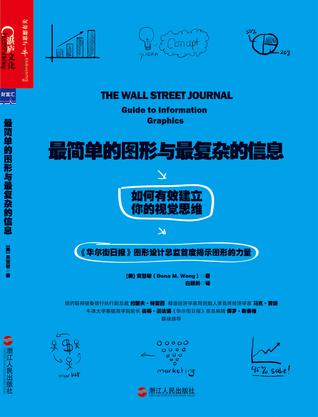
最简单的图形与最复杂的信息
[内容简介] ★在当今这个数据驱动、信息大爆炸的时代,我们需要懂得如何利用图形语言清晰、高效地表达自己。可是,我们应该如何选择反映信息的最佳图形?如何利用黑白两色令图形“多彩”?如何让“相貌平平”的图表升级为“才华出众”的图表?如何建立自己的视觉思维,以找到最有力的方式在最短的时间内打动决策者? ★在本书中,黄慧敏将数据分析和图形制作巧妙地结合在一起,清晰、有效地告诉我们如何将纷繁复杂的图形和陈述报告变得既简单又有表现力,实操性很强,且易于理解。 [编辑推荐] ★这是《华尔街日报》与作者第一次公开这种专业秘诀,出版后破天荒打进美国亚马逊金融投资类第一名、《纽约时报》商业类排行榜第九名。 ★作者是数据可视化权威爱德华•塔夫特(Edward Tufte)的学生,拥有耶鲁大学美术硕士学位,处理财金图表经验逾20年。 ★麦肯锡公司形象化沟通主管、纽约联邦储备银行执行副总裁、穆迪经济学家网创始人兼首席经济学家、牛津大学赛德商学院长、《华尔街日报》前总编辑等,对于黄慧敏非凡的资料解释能力、视觉呈现能力,都赞不绝口。 ★湛庐文化出品。 -
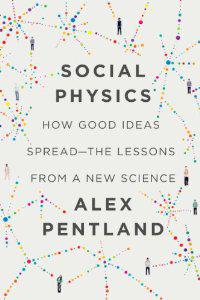
Social Physics: How Good Ideas Spread
From one of the world’s leading data scientists, a landmark tour ofthe new science of idea flow, offering revolutionary insights into the mysteries of collective intelligence and social influence If the Big Data revolution has a presiding genius, it is MIT’s Alex “Sandy” Pentland. Over years of groundbreaking experiments, he has distilled remarkable discoveries significant enough to become the bedrock of a whole new scientific field: social physics. Humans have more in common with bees than we like to admit: We’re social creatures first and foremost. Our most important habits of action—and most basic notions of common sense—are wired into us through our coordination in social groups. Social physics is about idea flow, the way human social networks spread ideas and transform those ideas into behaviors. Thanks to the millions of digital bread crumbs people leave behind via smartphones, GPS devices, and the Internet, the amount of new information we have about human activity is truly profound. Until now, sociologists have depended on limited data sets and surveys that tell us how people say they think and behave, rather than what they actually do. As a result, we’ve been stuck with the same stale social structures—classes, markets—and a focus on individual actors, data snapshots, and steady states. Pentland shows that, in fact, humans respond much more powerfully to social incentives that involve rewarding others and strengthening the ties that bind than incentives that involve only their own economic self-interest. Pentland and his teams have found that they can study patterns of information exchange in a social network without any knowledge of the actual content of the information and predict with stunning accuracy how productive and effective that network is, whether it’s a business or an entire city. We can maximize a group’s collective intelligence to improve performance and use social incentives to create new organizations and guide them through disruptive change in a way that maximizes the good. At every level of interaction, from small groups to large cities, social networks can be tuned to increase exploration and engagement, thus vastly improving idea flow. Social Physics will change the way we think about how we learn and how our social groups work—and can be made to work better, at every level of society. Pentland leads readers to the edge of the most important revolution in the study of social behavior in a generation, an entirely new way to look at life itself. -
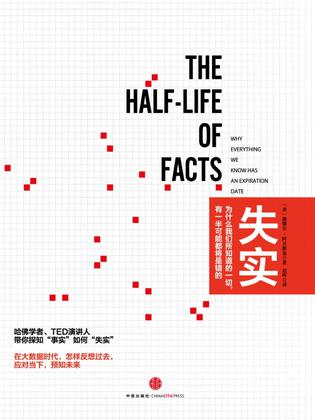
失实
以前医生建议吸烟,现在又说吸烟致命;我们一度认为地球是宇宙的中心,认定冥王星是一颗行星,深信雷龙是一种真实存在的恐龙,但这些事实已经通通被推翻。可见,事实并非一成不变。 但是,知识的变化并不是毫无章法,而是有迹可循的。在众多领域,知识的进化是系统的、有规律的,这种进化以一种有趣的方式深刻地影响着我们的生活。本书中,阿贝斯曼把我们带入了诸多领域,有的领域瞬息万变,有的领域的兴衰则是几年历程,有的领域的变迁则跨越了几个世纪。 书中有许多引入入胜的例子:英语专业的学生从《坎特伯雷故事集》的统计分析里能学到什么?丈量一座山的高度为什么这么难?为什么许多家长仍然告诉孩子要多吃菠菜,是因为菠菜补铁吗? 本书是通往科学新世界的精彩旅途,让我们在当今的大数据时代背景下,反想过去,应对当下,预知未来。